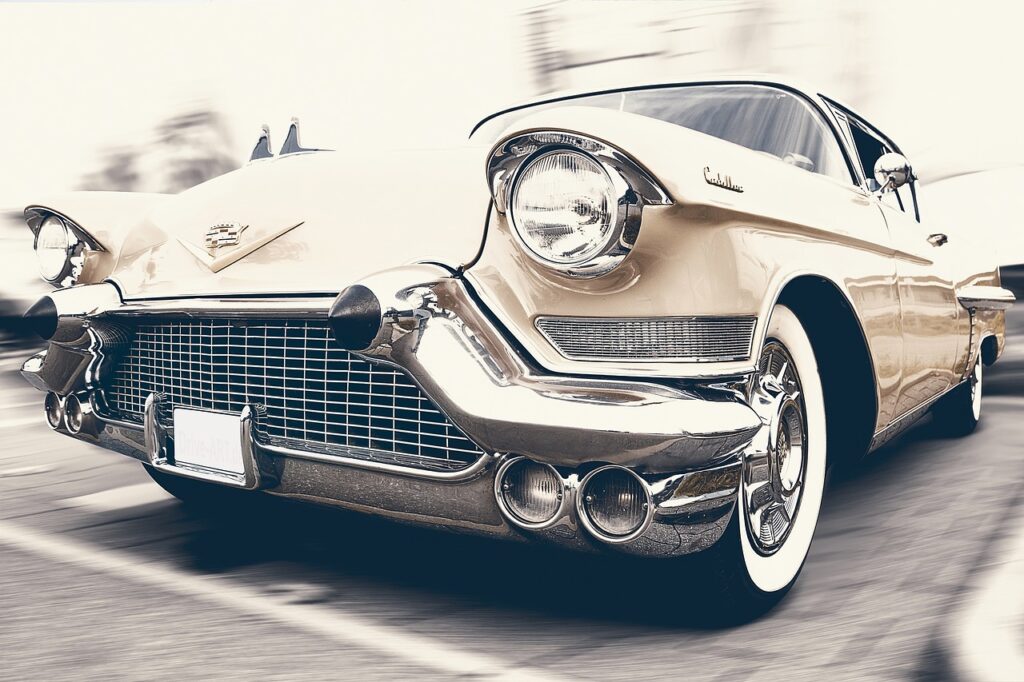
Choosing the right car color isn’t just about looks; it plays a crucial role in determining a vehicle’s resale value. The automotive color landscape is complex, where certain hues soar in popularity while others drastically decline, influenced by consumer tastes, market trends, and cultural associations.

1. **Gold**: Unfortunately, gold holds the title for the car color with the worst resale value. These vehicles experience rapid depreciation, often perceived as outdated or less desirable by most buyers. Research shows that gold cars depreciate by around 16.7%, equating to a staggering loss of up to $6,719 compared to their original price. The oversupply of gold cars in the market leads to diminished resale appeal.

2. **Brown**: Close on the heels of gold, brown is another color that struggles in the resale market. This color typically depreciates by around 17.8%, or about $7,642 when accounted for over three years. Brown is often perceived as dull or old-fashioned, which diminishes its appeal in the contemporary automotive market. The resale value of brown vehicles is heavily influenced by the fact that they are often tricky to sell, as many consumers prefer brighter or more neutral colors.

3. **Black**: Often linked to luxury and sophistication, black cars actually face significant depreciation. They typically lose about 16.1% of their value, resulting in an approximate loss of $6,993 after three years. This drop in value stems from the sheer number of black cars on the road; high availability decreases their desirability, pushing resale values down.

4. **White**: Surprisingly, white is a popular choice but also depreciates at a significant rate of 15.5%, with a value drop of about $6,490. While many buyers appreciate the cleanliness and classic look of a white vehicle, the commonality of white cars means that they do not necessarily command a premium price in the secondary market.

5. **Gray**: Much like white and black, gray cars see a depreciation rate of around 14.3%, which translates to a loss of approximately $5,635. While gray is favored for its understated elegance and easy maintenance, its neutrality can lead to it being overlooked in a competitive market.

6. **Silver**: This common color ranks slightly better than its grayscale counterparts, with a depreciation rate of 14.8% and a dollar loss of about $5,499. Silver cars are often appreciated for their ability to hide dirt and scratches, but the sheer number of silver vehicles available can lead to lower resale values.

7. **Beige**: Beige cars depreciate at a rate of 14.4%. Though often associated with traditional preferences, beige offers a subtle charm that some buyers may appreciate. However, its blandness can result in lower demand, negatively impacting resale values.

8. **Blue**: Depreciating by approximately 14.3%, blue vehicles retain a fair amount of their value compared to some of the more commonly seen colors. However, as with gray and silver, the range of available shades can impact overall market desirability.

9. **Green**: Surprisingly, green vehicles share a depreciation rate of around 14.0%. Although green can be a vibrant choice, it doesn’t have the universal appeal that neutral colors do, which can hinder resale value.

10. **Red**: Red vehicles, known for their sporty appeal, face a depreciation rate of 14.0%. While their vibrant color attracts many buyers, the oversaturation of red cars in the market contributes to their reduced resale prices.

Ultimately, making an informed choice about the color of your car can optimize its value and enhance your overall driving experience. As trends shift and consumer preferences change, it’s wise to keep an eye on the evolving landscape of automotive colors to ensure that your investment stands the test of time. By blending fashion-forwardness with practical considerations, you can choose a car color that not only speaks to your personal style but also makes financial sense in the long run.

With careful consideration of these factors, you’ll be better equipped to select a car color that not only appeals to your aesthetic but also supports the value of your investment. The world of car colors is far from superficial; it carries weighty implications for resale value that every buyer should consider before making a purchase decision. Remember, the right color can make all the difference in both your ownership experience and your car’s future marketability.

11. **Yellow**: Often overlooked, yellow is a standout when it comes to resale value, depreciating at just 4.5%. Its vibrant hue is not only eye-catching but also signals rarity in a sea of more common colors, making it a coveted choice among buyers. Yellow cars, typically found in sporty models, tend to retain their charm and financial worth over time.

12. **Orange**: With a depreciation rate of 10.7%, orange vehicles occupy a unique niche in the market. Often associated with special editions or sporty designs, this bold color can attract attention and buyers alike. The limited availability of orange cars often means they hold their value better than more traditional shades, making them an appealing choice for the adventurous buyer.
13. **Purple**: This color often evokes a sense of luxury and uniqueness. With a depreciation rate of 13.9%, purple cars offer a distinctive look that can be appealing to many buyers. They tend to be less common, which can lead to a more significant value retention when it comes time to resell, allowing owners to stand out while also securing a better financial return.
**The Importance of Color Choice**: Understanding the impact of your color selection is vital for anyone considering a car purchase. As market trends and consumer preferences change, making savvy choices can enhance your vehicle’s value and your overall satisfaction. Opting for colors that tend to maintain their allure, like yellow, orange, and purple, can be a smart investment strategy.
Related posts:
iSeeCars: The Best and Worst Car Colors For Resale Value
Car Colours to Avoid: Making The Best Choice For Longevity, Style And Value
These Car Colors Have the Highest (and Lowest) Resale Value






